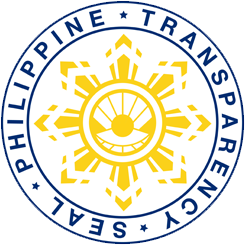Farmers from different provinces in the country differ in terms of the quantities of inputs used, technologies adopted, and management skills employed. This results in the varying yield and production cost among farmers.
To address this, economists from the Socioeconomics Division of the Philippine Rice Research Institute (PhilRice) shared ways on how to narrow these gaps to help farmers increase their productivity and income based on the findings from 33 major rice producing provinces in the Philippines.
In a seminar-workshop on Rice Value Chain and Comparative Efficiency in the Philippines, Aileen C. Litonjua, a senior science research specialist from PhilRice’s Socioeconomics Division presented the results of the study Narrowing the Yield and Cost Gaps: Comparative Efficiency of Rice Farming in the Philippines.
“Adopting high-quality seeds, such as hybrid, can increase yield by 1.81 mt/ha from the baseline yield of 4 mt/ha. A ton increase in farmers’ yield can lead to production cost reduction of P0.91/ kg,” Litonjua highlighted.
According to Litonjua, the use of high-quality seeds and better access to irrigation water can also significantly increase farmers’ yield growth. Higher yield and better management skills of farmers, along with their adoption of high-quality seeds and mechanized harvesting and threshing, will then reduce their production cost.
She also added that improving farmers’ technical and allocative efficiency is one of the ways to help narrow yield and cost gaps among them. Currently, the technical and allocative efficiency of farmers at the national level are 75% and 81%, respectively. These efficiencies can be improved through interventions on factors such as farmers’ education, training/ seminar, and membership to farmers’ organizations.
In her presentation, she explained that yield in rice farming is a result of basic inputs (e.g., seeds, fertilizers, machineries, capital) and farmers’ management skill which is measured using technical and allocative efficiency. Technical efficiency measures the farmers’ ability to produce the maximum attainable yield out of the given amount of inputs used. Allocative efficiency, on the other hand, is the farmers’ ability to use to least-cost combination of inputs to produce his/her desired yield.
Based on these findings, 400 participants from all regions in Luzon, Visayas, and Mindanao crafted localized policies and strategies targeting to narrow the yield and cost gaps in their respective areas through the said seminar-workshop held in Puerto Princesa City, September 19-20 and Cagayan de Oro City, October 25-26. This effort was done to achieve farmers’ shared goal of achieving their highest possible yield with the least amount of cost every cropping season.
Participants in this seminar-workshop were composed of rice focal persons, regional/ provincial planners, provincial/ municipal/ city agriculturists, extension workers, farmers, millers, traders, and other rice stakeholders.





